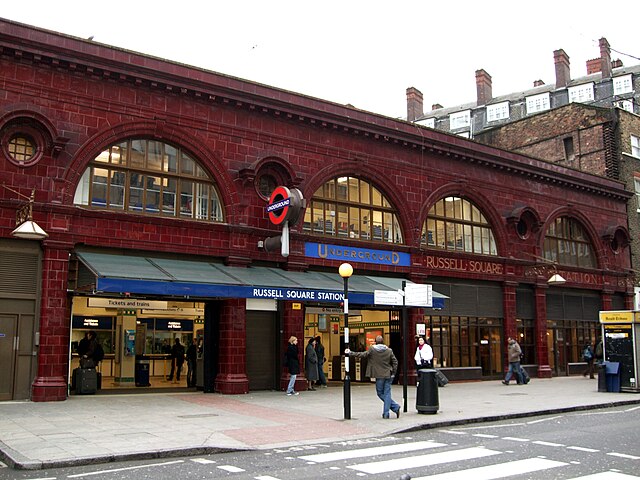History of the London Underground
The history of the London Underground began in the 19th century with the construction of the Metropolitan Railway, the world's first underground railway. The Metropolitan Railway, which opened in 1863 using gas-lit wooden carriages hauled by steam locomotives, worked with the District Railway to complete London's Circle line in 1884. Both railways expanded, the Metropolitan eventually extending as far as Verney Junction in Buckinghamshire, more than 50 miles (80 km) from Baker Street and the centre of London. The first deep-level tube line, the City and South London Railway, opened in 1890 with electric trains. This was followed by the Waterloo & City Railway in 1898, the Central London Railway in 1900, and the Great Northern and City Railway in 1904. The Underground Electric Railways Company of London (UERL) was established in 1902 to fund the electrification of the District Railway and to complete and operate three tube lines, the Baker Street and Waterloo Railway, the Charing Cross, Euston and Hampstead Railway and the Great Northern, Piccadilly and Brompton Railway, which opened during 1906–1907. By 1907, the District and Metropolitan Railways had electrified the underground sections of their lines.

Marble Arch tube station, c. 1900
The Central line opened as the "Twopenny tube" in 1900. A Northern line train leaves a tunnel mouth just north of Hendon Central station.
Electrification – 1907 drawing of Metropolitan Railway – Ruislip and Harrow sub-stations
Russell Square station, an example of the Leslie Green design used for the UERL's stations
Public–private partnership
A public–private partnership is a long-term arrangement between a government and private sector institutions. Typically, it involves private capital financing government projects and services up-front, and then drawing revenues from taxpayers and/or users for profit over the course of the PPP contract. Public–private partnerships have been implemented in multiple countries and are primarily used for infrastructure projects. Although they are not compulsory, PPPs have been employed for building, equipping, operating and maintaining schools, hospitals, transport systems, and water and sewerage systems.
Gavin Newsom hosts a meeting for employers about public-private partnerships. (13 November 2019)
Protest in France against encroaching privatization and the introduction of profit-seeking practices in the public sector. (22 March 2018)
Second Toll Gate on Yonge Street in 1886
During his first term in office, Tony Blair made public-private partnerships the norm for government procurement projects in the United Kingdom.








